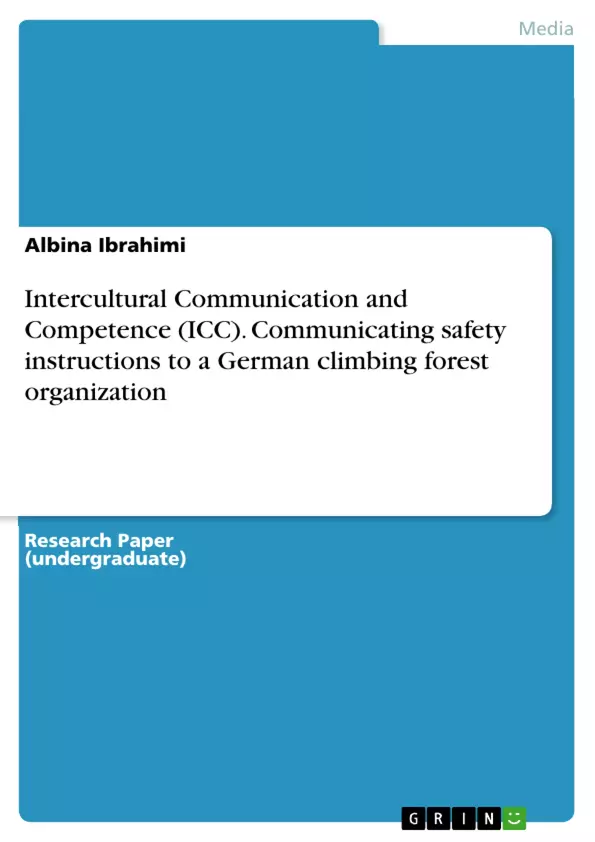Intercultural communication and competence is becoming increasingly important in a globalized world. The present study analyzes the causes of complaints from international customers and trainers at a climbing forest organization with regard to the safety instructions. Hofstede’s cultural dimensions are used for the comparison between cultures due to their practicability.
Inhaltsverzeichnis (Table of Contents)
- List of abbreviations
- Management Summary
- 1. Introduction
- 2. Analysis of root-causes of complaints
- 3. Discussion of concepts and theories
- 4. Recommendations for the climbing forest organization
- 5. ICC action plan
- 6. Summary
- References
- Overview grid
- Appendix
Zielsetzung und Themenschwerpunkte (Objectives and Key Themes)
This case study examines the challenges of intercultural communication at a German climbing forest organization, analyzing the root causes of complaints from international customers and trainers regarding safety instructions. It aims to find solutions for improving customer and staff satisfaction by applying intercultural communication competence (ICC) skills.
- Impact of cultural differences on the perception of safety instructions
- Application of Hofstede's cultural dimensions to understand customer behavior
- Strategies for enhancing intercultural communication competence among trainers
- Development of an ICC action plan for improving customer and staff satisfaction
- The role of ICC in achieving organizational success in a globalized market
Zusammenfassung der Kapitel (Chapter Summaries)
- 1. Introduction: This chapter introduces the study's context, highlighting the increasing importance of intercultural communication in a globalized world. It discusses the challenges faced by the German climbing forest organization in effectively conveying safety instructions to a diverse clientele.
- 2. Analysis of root-causes of complaints: This chapter analyzes the complaints received by the organization, identifying the cultural factors contributing to misunderstandings regarding safety instructions. It uses Hofstede's cultural dimensions to compare individualistic and collectivistic cultures, explaining how these cultural differences influence customer behavior.
- 3. Discussion of concepts and theories: This chapter explores the theoretical concepts and frameworks relevant to intercultural communication, focusing on the importance of understanding cultural nuances and developing intercultural competence. It examines the specific challenges faced by the climbing forest organization in light of these theoretical frameworks.
- 4. Recommendations for the climbing forest organization: This chapter outlines specific recommendations for the organization to address the challenges of intercultural communication. It suggests implementing workshops for trainers to enhance their understanding of different cultures, as well as adopting different approaches to delivering safety instructions to individualistic and collectivistic customers.
- 5. ICC action plan: This chapter details a comprehensive ICC action plan for the organization, outlining steps for developing intercultural communication competence among trainers and implementing effective strategies for interacting with diverse customers.
Schlüsselwörter (Keywords)
This case study focuses on intercultural communication competence (ICC), Hofstede's cultural dimensions, safety instructions, customer satisfaction, staff satisfaction, and organizational success in a globalized market.
- Quote paper
- Albina Ibrahimi (Author), 2017, Intercultural Communication and Competence (ICC). Communicating safety instructions to a German climbing forest organization, Munich, GRIN Verlag, https://www.grin.com/document/370854



